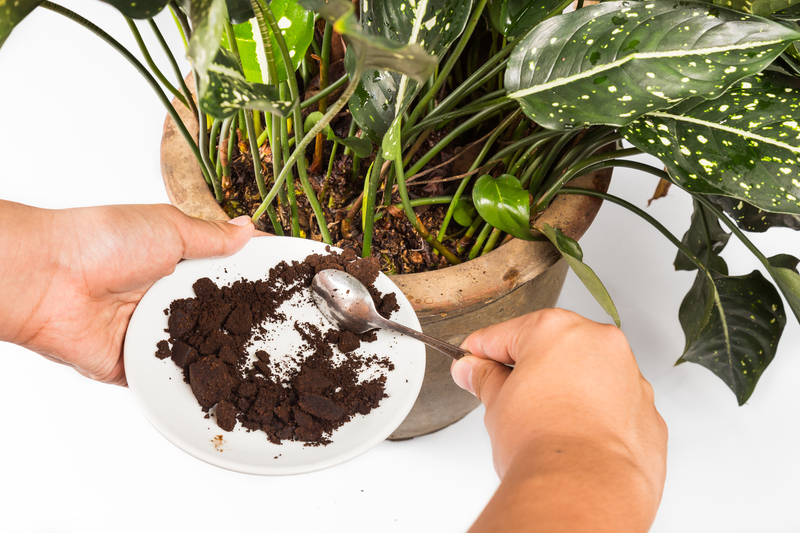Revolutionize Your Approach to Orchid Care
Posted on 19/05/2025
Revolutionize Your Approach to Orchid Care: The Ultimate Guide
Orchids, with their breathtaking beauty and captivating elegance, have fascinated plant enthusiasts for centuries. Yet many people shy away from growing these exquisite flowers due to a reputation for being "difficult." But what if you could revolutionize your approach to orchid care? In this comprehensive guide, we will unravel modern, science-backed techniques and actionable tips to help you master orchid plant care and enjoy thriving blooms year-round.

Understanding the Orchid: The Key to Success
To truly revolutionize orchid maintenance, start by understanding what makes orchids unique. Orchids are not your typical houseplants--they are epiphytes, meaning they naturally grow on other plants, not in soil. This adaptation calls for a specialized approach to their care.
- Over 25,000 species exist in the wild, reflecting a vast diversity in appearance and requirements.
- Common home-grown orchids include Phalaenopsis (moth orchids), Cattleya, Dendrobium, and Oncidium.
- Each species might have slightly different needs, but several core principles apply universally.
The Three Pillars of Modern Orchid Care
Achieving consistently healthy and blooming orchids is simpler than it seems. Focusing on these critical elements can transform your orchid care routine:
- Light Management
- Watering Wisdom
- Optimal Nutrition & Potting
Perfecting Light for Orchids: Beyond the Basics
Outsmarting Light Challenges
Orchids love bright, indirect light. Demystify this phrase by considering the orchid's natural environment--under rainforest canopies, dappled sunlight filters through leaves. Artificially recreating this environment at home is entirely possible.
- Place orchids on an east-facing window sill for gentle morning sun.
- Sheer curtains help diffuse harsh afternoon rays that may scorch leaves.
- For homes with limited natural light, consider full-spectrum LED grow lights. Modern grow lights are affordable, energy-efficient, and can be set on timers for consistent exposure.
Monitor leaf color as a quick health indicator:
- Healthy green = good light
- Dark green = too little light (less likely to bloom)
- Yellowish or red-tinged = too much light
Quick Tip:
Rotate your orchid every 1-2 weeks to promote even growth and prevent one-sided foliage.
Mastering the Art of Watering
How Often and How Much?
Overwatering is the #1 cause of orchid decline. Their roots need both air and moisture, making standard houseplant routines unsuitable.
- Water once a week in most homes; reduce in cooler, darker months and increase in dry, warm weather.
- Use the "finger test"--insert your finger 1 inch into the orchid's media; if dry, it's time to water.
- Always let water drain freely--never let roots sit in standing water.
Expert hack: Try soaking pots in a bowl of water for 10-15 minutes, then let drip dry. This mimics rainfall in their natural habitat.
Humidity Matters
Orchids thrive at 40-60% humidity. If your home is dry:
- Place a humidity tray (a shallow tray filled with pebbles and water) near your plant.
- Group orchids together to create a microclimate.
- Use a small humidifier during colder months.
Orchid Potting and Nutrition: Think Like an Expert
The Best Orchid Media
For a revolutionary orchid cultivation setup, the choice of potting mix is critical. Avoid regular potting soil. Instead, use:
- Bark mix (fir or pine bark chips)
- Sphagnum moss for moisture retention, especially in dry climates
- Perlite or charcoal for improved drainage and aeration
Repot your orchid every 1-2 years, or sooner if the media decomposes or roots outgrow the pot.
Feeding Your Orchid Right
Orchids need less fertilizer than you might think. Over-fertilizing can burn roots and stunt growth.
- Use a balanced, water-soluble orchid fertilizer (20-20-20 or a blend specially formulated for orchids).
- Apply at half-strength every 2-4 weeks during active growth (usually spring and summer).
- Flush the pot with plain water once a month to prevent salt buildup.
During winter, cut back on feeding as plants are typically dormant.
Revolutionary Techniques Every Orchid Owner Should Try
Switch to Transparent Pots
Orchid roots photosynthesize! Transparent pots, a modern innovation, allow roots access to light and help you monitor moisture and root health directly.
- Look for white, plump roots (healthy).
- Brown or mushy roots = overwatering or rot.
- Silver roots mean it's time to water.
Automated Watering Systems
For busy plant lovers, self-watering pots and drip irrigation systems have changed the game. These systems maintain steady moisture without fuss and reduce the risk of both under- and over-watering.
Boosting Orchid Blooms The Smart Way
To encourage regular blooming, recreate the mild temperature drops found in their natural habitat:
- At night, let temperatures drop by 10-15?F compared to the daytime for a few weeks in the autumn. This triggers Phalaenopsis orchids to spike new flowers.
- Consistent care yields spectacular results!
Diagnosing and Solving Common Orchid Problems
Root Rot and Fungal Invaders
The most common threat is root rot--the result of overwatering or poor drainage. Signs include wilting, black or mushy roots, and yellowing leaves.
- Remove affected roots with sterile scissors.
- Repot in fresh, dry media.
- Ensure pots have adequate drainage holes.
Pest Patrol: Mites, Scale, and Mealybugs
Orchids can attract unwanted guests. To revolutionize your pest management:
- Wipe leaves with a mild solution of water and gentle dish soap.
- Apply horticultural oil or neem oil sprays (test on a small leaf first).
- Boost air circulation with a small fan, discouraging fungal and pest infestations.
Cutting-Edge Orchid Care: Technology Meets Tradition
Smart Sensors & Apps
Welcome to the era of high-tech orchid care. Smart humidity meters, soil moisture sensors, and growing apps let you monitor your plant's environment in real time, offering reminders and customized advice. These gadgets empower beginners and experts alike to maintain optimal conditions effortlessly.
DIY Orchid Terrariums
Bring a dramatic visual twist to your orchid display with terrariums and semi-hydroponic systems. These modern approaches allow for precise control over humidity and simplify watering routines.
- Use LECA (lightweight expanded clay aggregate) instead of bark for a soil-free, low-maintenance solution.
- Ensure enough light and air flow inside your terrarium to prevent mold.
Taking Orchid Care to the Next Level: Advanced Tips
Regular Grooming and Observation
Inspect your orchids weekly to spot problems early. Remove dead or yellow leaves to prevent disease. Clean your tools with rubbing alcohol between plants.
Orchid Reblooming Secrets
If your orchid seems stubborn, try this expert strategy:
- After the last bloom drops, cut the spike above the third "eye" (node) from the base. This may encourage a new side spike to form.
- Keep fertilizing lightly and provide steady, bright light for the best chance of reblooming.
Go Organic When Possible
Utilize organic coconut husk chips, worm castings, or kelp-based feeds to keep your orchid and the environment healthy.
Frequently Asked Questions: Orchid Care Myths Debunked
1. Are orchids suitable for beginners?
Absolutely! With the advances in modern orchid care, even novices can experience success. Start with easy species like Phalaenopsis and follow this guide's practical advice.
2. Do orchids need to be watered with ice cubes?
No. While trendy, the ice cube method can shock roots and cause more harm than good. Stick to lukewarm water and follow your orchid's natural watering cycle.
3. Why are my orchid buds falling off?
Sudden drops in temperature, over- or under-watering, or exposure to drafty windows can cause bud blast. Stabilize your orchid's environment for the best results.

Conclusion: Transform Your Orchid Journey
By embracing a modern, holistic approach to orchid care, you can grow orchids with confidence and delight in their recurring beauty. Remember these essential points:
- Right light--dappled, bright, and indirect
- Thoughtful watering--keep roots moist but airy
- High humidity, proper feeding, and vigilant pest control
- Leverage technology and cutting-edge products for a low-stress, high-reward experience
*Revolutionize your orchid regimen today--combine science, observation, and a little passion, and watch your orchids thrive for years to come!*
Ready to Revolutionize Orchid Care at Home?
Start your journey with one orchid and experiment with the techniques outlined in this guide. Share your progress, learn from mistakes, and discover the transformative joy that comes from nurturing one of nature's most extraordinary plants.
Bring home an orchid and redefine what's possible--your new era of orchid growing starts now!



